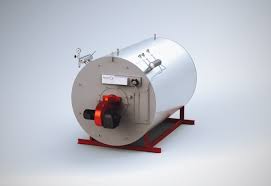
Ara . 02, 2024 04:10 Back to list
oil fired hot water boiler diagram
Understanding the Oil-Fired Hot Water Boiler A Comprehensive Overview
Oil-fired hot water boilers are essential components of many heating systems, primarily used in residential, commercial, and industrial settings. They provide a reliable source of heated water for various applications, such as space heating, domestic hot water, and even for processes in manufacturing. In this article, we will explore the key components of oil-fired hot water boilers, their functionality, advantages, and some considerations for maintenance and efficiency.
What is an Oil-Fired Hot Water Boiler?
An oil-fired hot water boiler operates by burning oil to create heat, which is then transferred to water in a tightly sealed chamber called a boiler. The heated water is circulated through pipes to provide warmth to different areas of a building or to be used for other thermal processes.
Key Components of an Oil-Fired Hot Water Boiler
The basic diagram of an oil-fired hot water boiler typically includes the following components
1. Burner The burner is one of the most crucial components, where oil is combined with air and ignited to produce a flame. There are various types of burners, including gun burners and pot burners, each suited for different operational needs.
2. Boiler Tank This is the main chamber where water is heated. The design can vary, including vertical or horizontal configurations, and is often insulated to minimize heat loss.
3. Heat Exchanger The heat exchanger transfers the heat generated from the burner into the boiler water. It is usually made of metal and designed to maximize surface area to ensure efficient heat transfer.
4. Circulation Pump This pump helps circulate the heated water through the system, delivering hot water to radiators or other heating elements in the structure.
5. Expansion Tank To accommodate the expansion of water as it heats up, an expansion tank is used to prevent excessive pressure buildup in the system.
6. Controls and Safety Devices These include thermostats, pressure relief valves, and safety switches that monitor and regulate the operation of the boiler, ensuring safety and efficiency.
How Does an Oil-Fired Hot Water Boiler Work?
The operation of an oil-fired hot water boiler begins with the burner igniting the oil. The flame produced heats the surrounding water in the boiler tank. As the water reaches the desired temperature, it is pumped through the distribution system, providing heating to the various parts of a building.
oil fired hot water boiler diagram

One notable advantage of oil-fired systems is their ability to heat water to high temperatures, making them suitable for applications demanding significant thermal output. They are particularly beneficial in regions where natural gas is not available, offering an alternative heating solution.
Advantages of Oil-Fired Hot Water Boilers
1. Efficiency Modern oil-fired boilers are designed to be highly efficient, with many models achieving upwards of 90% efficiency. This means that the majority of the energy produced from the oil is effectively used for heating.
2. Reliability Oil-fired systems are known for their reliability and can provide a consistent supply of hot water even in extreme weather conditions.
3. Versatility They can cater to various heating needs, whether for space heating, hot water supply, or industrial processes.
4. Fuel Availability In many regions, oil is readily available, making it a convenient option for heating.
Considerations for Maintenance and Efficiency
To ensure optimal performance, regular maintenance of oil-fired hot water boilers is essential. Here are some considerations for maintaining efficiency
- Annual Inspections A qualified technician should inspect and service the boiler at least once a year. This includes cleaning the burner, checking the fuel supply system, and inspecting the heat exchanger.
- Monitor Oil Quality The quality of the oil used affects combustion efficiency. Ensure the oil is clean and free of impurities.
- Keep an Eye on Control Systems Regularly check and calibrate thermostats and control systems to ensure they operate effectively.
- Insulation Proper insulation of piping and the boiler itself helps reduce heat loss, improving overall system efficiency.
In conclusion, oil-fired hot water boilers are a vital part of heating systems in various settings. Understanding their components, operation, and maintenance needs can help users maximize efficiency and reliability, ensuring a continuous supply of hot water when it is most needed. As with any heating solution, making informed choices concerning installation and upkeep can lead to long-term savings and comfort.
-
Oil Fired Hot Water Boilers Sale - High Efficiency & Affordable
NewsJul.31,2025
-
High-Efficiency Commercial Oil Fired Steam Boiler for Industry
NewsJul.30,2025
-
High-Efficiency Biomass Fired Thermal Oil Boiler Solutions
NewsJul.30,2025
-
High Efficiency Gas Fired Thermal Oil Boiler for Industrial Heating
NewsJul.29,2025
-
High-Efficiency Gas Fired Hot Water Boiler for Sale – Reliable & Affordable
NewsJul.29,2025
-
High Efficiency Biomass Fired Hot Water Boiler for Industrial and Commercial Use
NewsJul.29,2025
Related PRODUCTS






















